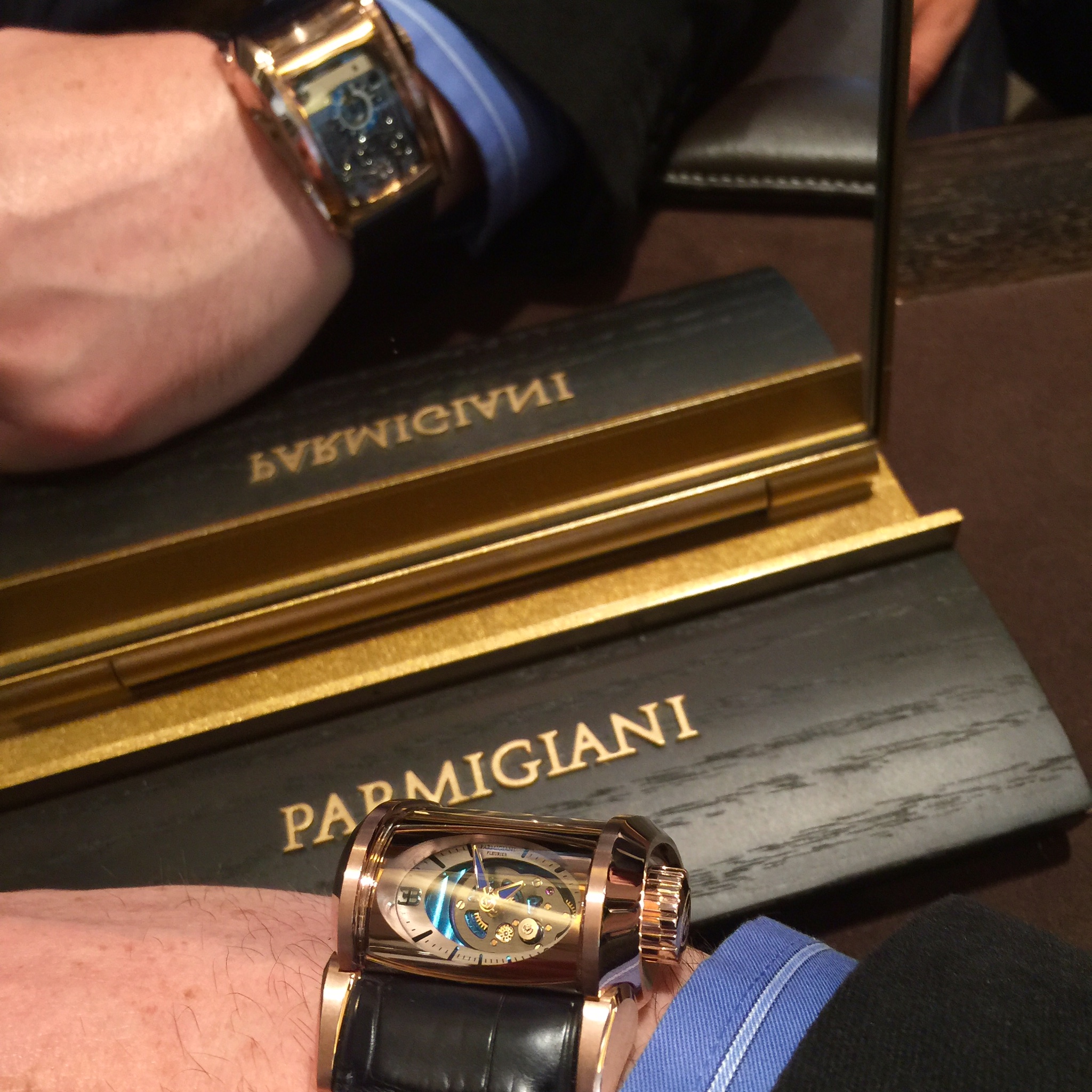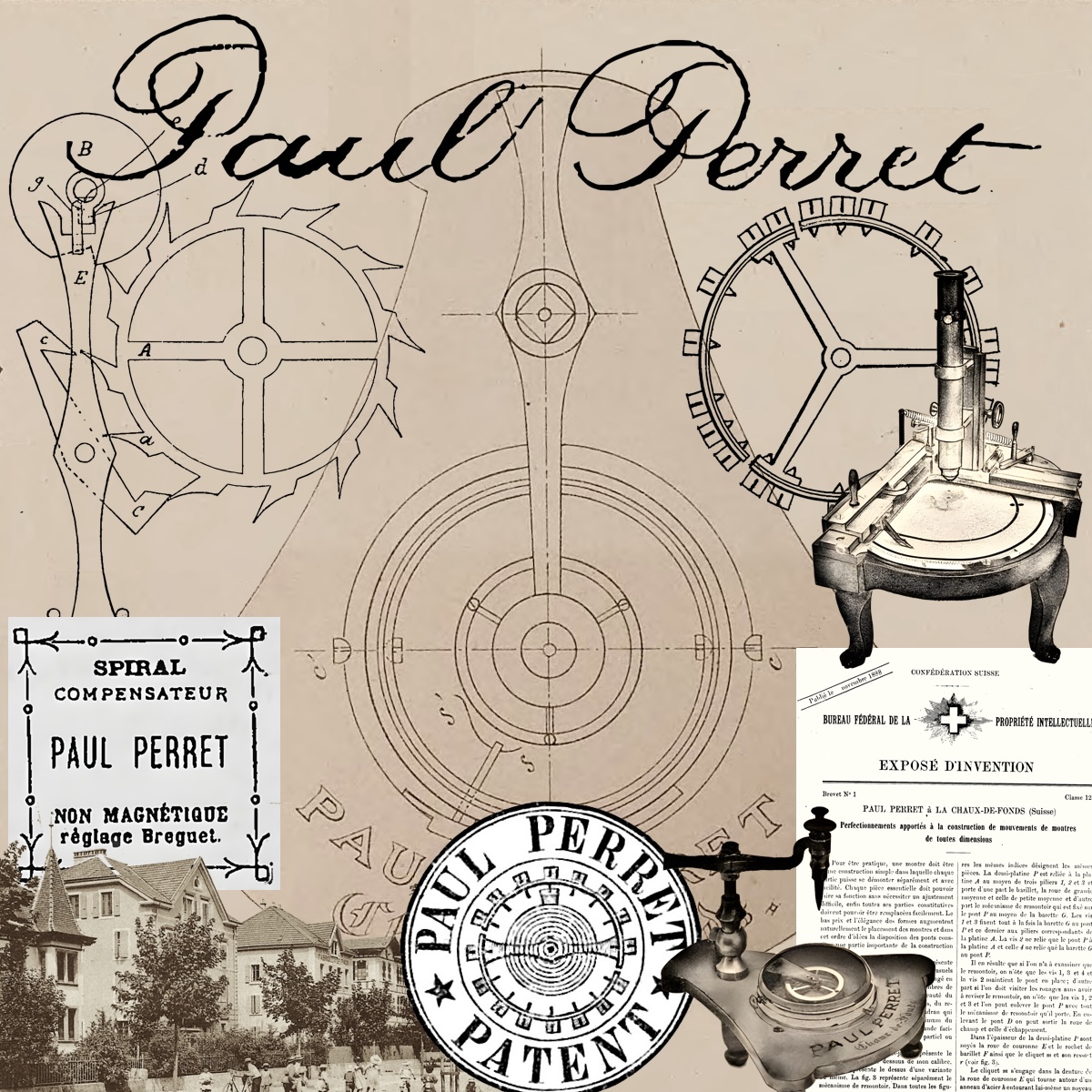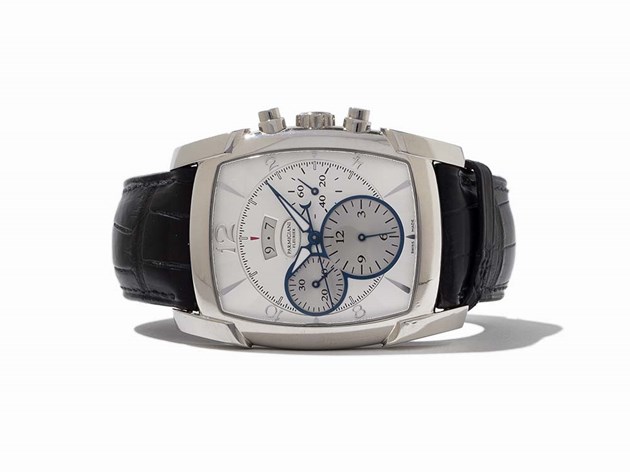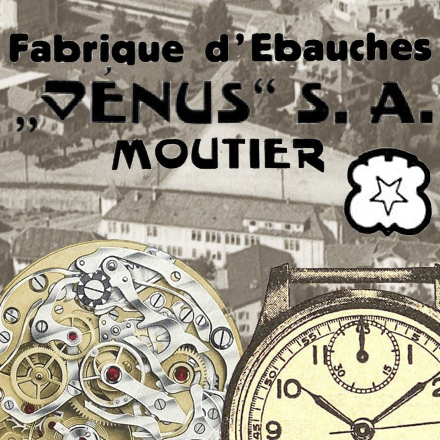“L’adresse de messagerie que vous avez entrée est introuvable” was the response I received when inquiring about the status of my watch. “The email address you entered could not be found” is not the response anyone should receive when contacting the representative of a high-end watch company about an expensive watch that failed less than a year after purchase. But it was typical of the level of service I received from Parmigiani Fleurier USA. This is the story of my Tonda 1950 and the long wait to restore it to working order.

Gold Brothers: Parmigiani and Chronoswiss
I have always wanted to have a Parmigiani Fleurier watch in my collection. I first became aware of the legendary Swiss brand when researching the pieces listed in an auction catalog. It was the distinctive lugs that got my attention, mixing classic elements into a look that was hyper modern. I soon learned about Michel Parmigiani, the celebrated watchmaker and businessman behind his namesake brand and for the resurgence of watchmaking in the Val-de-Travers north of Geneva.
Parmigiani is a high-end brand, responsible for a decade of fantastic and complicated Bugatti watches and often including gems and precious metals like palladium and platinum. There are no low-end Parmigiani watches, with even the simple Tonda sporting a heavy gold case and in-house micro-rotor movement. Even old or at auction, Parmigiani models are out of reach for average watch collectors. And exotic watches like these often need expensive service.
Traveling for work, I often visited the watches in The Atrium shop at the Venetian/Palazzo Resort in Las Vegas. They carried unusual brands like Christophe Claret, Chronoswiss, and Parmigiani, giving a rare look at some interesting watches. Last march, I was surprised to find that the store, owned by duty-free giant Hudson Group, was closing. This presented an opportunity to buy at a discount, yet still from an authorized dealer with the full warranty. I dove in to the remaining selection.

There were two watches that caught my eye: A classic Chronoswiss Regulateur C.122 and an unusual Parmigiani Tonda 1950. Although both sported rose gold cases, the liquidation sale presented the opportunity to purchase them at “steel case” prices. Sold! I took home the pair, complete with authorized dealer paperwork and warranty.
Both are thin automatic dress watches in rose gold, but they couldn’t be more different. Each reflects the watchmaking focus of its founder. The Chronoswiss C.122 features Gerd-Rüdiger Lang‘s signature regulator complication, with separate hands at 12, center, and 6 for hour, minute, and seconds. The reverse side reveals a re-engineered classic Enicar automatic movement, a particular hobby for Lang. The Parmigiani is powered by Michel Parmigiani‘s micro-rotor PF701 movement, a classic design reminiscent of the one he designed for Chopard that established his bona fides. The Chronoswiss is enthusiastically classic, with its huge onion crown and scroll lugs, while the Parmigiani is obliviously modern.
The Tonda Slows and Stops
Although I love the Chronoswiss Regulateur, the Parmigiani Tonda is obviously superior in style and workmanship. This is to be expected, since it sits in the “haute horology” rather than the mere “luxury” segment of the watch market. These are not competitors!
Micro-rotor movements have a long history, and it’s not all positive. First appearing in 1958, a small inset rotor allowed Büren and Universal Genève to deliver a thinner automatic movement than was otherwise possible. Piaget was the champion of the micro-rotor in the 1960s, delivering the thinnest movements ever seen, while Büren contributed theirs to the famous Chronomatic movement in 1969. The design is usually seen in high-end luxury movements today, from Patek Philippe to Chopard to Parmigiani and Armin Strom.

I was not surprised the first time my new Parmigiani stopped. The problem with micro-rotors is that they generate less torque as they turn, which means less-efficient winding of the mainspring. Watchmakers attempt to overcome this by using exotic materials with greater density, including tungsten, gold, and platinum. Many also use uni-directional winding, which they claim improves efficiency and reliability. Still, it is widely understood that micro-rotor automatic movements often run down when used in a sedentary manner, such as sitting at a desk.
I decided to put the Parmigiani on my watch winder to make sure it was fully wound before wearing it. This would also allow me to measure its timekeeping performance over a longer period. I was pleased to see that the watch gained under 3 seconds per day on average over two weeks, with very little variance between being worn or sitting on the winder.
But I became alarmed a few days later when I again found the watch stopped, despite sitting in the winder. I wound it by hand, making sure I could see the barrel turning many times. But it stopped later that day anyway. I tried winding it by hand and wearing it, even turning it over and over in my hands and watching the winding gear turning. Still, it only ran for a few hours. And the timekeeping became erratic too, from gaining a few seconds a day to losing dozens. Something was terribly wrong with the Tonda!
My Parmigiani USA Service Experience
Note: This entire situation took place during the global pandemic, and this has obviously affected many companies including my own. I am sensitive to this situation, and am “pulling my punches” to some extent because of this. However I also believe that companies must keep on top of customer service, even amid business disruption, and must live up to the promises they make to their customers. I also will not be “naming names” of the employees involved, since many are likely going through tough times of their own.
Although the Tonda was not performing well since purchase, I wasn’t sure it needed service until I went through a more exhaustive test. I tried wearing it every day for a week and it stopped. I tried leaving it on the winder and it stopped. Then the pandemic came and everyone had more important things to do so I set it aside for a while. Still, I was concerned that if I waited too long the warranty would be up and I would be stuck with a potentially large service bill on a brand new watch.
Once the lockdown was over, I decided I needed service. Since the selling dealer was out of business, I reached out to Parmigiani Fleurier through their website, asking for a service referral. They advised that their Miami boutique would take care of the matter, and connected me with an employee there, who I will refer to as Person X. He said that he would be able to handle the service as soon as their shop reopened and would contact me but never responded further. Still, two weeks later I emailed back and Person X said they were again open for service.
Issue 1: “Send me your watch!”
Person X advised me to mail the timepiece to the boutique, but was not specific about packaging or what items to include. Later he did tell me I would have to include the original warranty card and a photocopy of my receipt. But there was no “official” document showing the address, what to include, how to package the watch, or what the procedure would be. Just a casual email saying, essentially, “send me your watch!”
This is rather nerve-wracking considering that we are talking about a rather valuable timepiece. I had assumed they would have a standard instruction sheet or even a pre-paid box to use. The whole transaction felt very ad-hoc, like they had never before serviced a watch via mail before.
Then there was the issue of shipping. My local FedEx store refused to insure the watch. I later learned about the FedEx Declared Value Advantage program, but the store did not suggest this even when I asked about insurance. Reluctantly, I packaged my watch and the original warranty card into a special watch mailer box I had on hand, packaged that into a generic FedEx box, and shipped it off to Miami. It would be really nice if the company had helped out with this!
Suggestion: Watch companies should have a “service package” that they mail to customers, including an appropriate mailing container and packaging material and a professional instruction sheet. They should also negotiate and provide pre-paid insured shipping with FedEx or UPS.
Issue 2: “Where is my watch?”
I had also assumed that Parmigiani would take a “hands on” customer service approach, talking me through the process with a phone call, or at least a few pleasant emails. This is how the Jaeger-LeCoultre boutique in Las Vegas treats me, and it really helped reassure me.
I was relieved when Person X emailed me right on time to let me know he had received the watch and passed it on for service. But that was the last I ever heard from him. The promised “2-3 weeks” passed and no one contacted me. I decided that the pandemic must be affecting service and I should be patient. So I waited.
Two months after mailing my watch, I emailed again. The email bounced. “Unfortunately Person X is no longer with the company. Please contact Person Y” I received the same bounce from the Parmigiani employee who had referred me. And Person Y? His email bounced too!
I was alarmed to discover that the Miami boutique was no longer listed on the Parmigiani website. Where did my watch go? Who had it? Why did no one contact me?
Suggestion: Assign a primary in-house contact to every service request and track them internally to ensure that they receive timely updates on their service status and are treated as valued customers.
Issue 3: “What Happened to My Watch?”
At this point, I panicked. I tried contacting Parmigiani again (even making a telephone call to Switzerland) but they were still closed for the Summer holiday. I also reached out in online forums to ask for help from other Parmigiani owners. The next week, when Parmigiani reopened, I was able to reach someone internally by phone. Person Z emailed back and took over contact with me and their in-house watchmakers regarding my service.
Person Z contacted me again a little over a week later to inform me that the repair was complete and my watch was on the way back to me. The watch did indeed arrive the next day and appeared to be in good working order. One disappointment is that Person X had not instructed the watchmaker to leave the case un-polished so it appears slightly softer around the edges now. It was also much brighter pink, though it has mellowed since.

One concern remains: I have no idea what service they did to the watch. Unlike other companies, which have provided me with a basic breakdown of the service performed, I received nothing more than the watch and my original documents. Did, as I suspected, the mainspring break? Did they completely disassemble the watch? Did they time it for accuracy? Did they test it for water resistance? I have no idea except that the watch now appears to function as it did the day I received it.
Suggestion: Communication should be more complete and helpful, and customers should received at least a basic report of what repairs were done and what tests were performed. Some watch companies provide this, but Parmigiani did not. There should also be an extended warranty covering at least the service performed.
What Went Right
The company did return the watch in a nice service box. And, on my request, Person Z also included an extra “pillow” for the lovely watch roll that shipped with the watch originally. I sincerely appreciate this.
I also appreciate that the watch appears to be fully functional once again. It isn’t as accurate as it once was, suggesting that the watchmaker did not properly adjust it, but it still keeps good enough time.
I hope I never again have an issue with my Parmigiani, though I do expect I will have to return it for service at some point in the future. Now that I have some contacts, including a referral to an authorized dealer, I hope I will not have to go through all this alone.

The Grail Watch Perspective: Watch Companies Need In-House Customer Service
My fundamental concern is a lack of “ownership” of customer service, and this is an issue for many companies. Swiss watch brands have long relied on retailers for sales and customer support, but this channel is failing. The internet, the boutique system, and the pandemic have essentially eliminated the traditional manufacture-retail-consumer channel, yet companies have not built a new one to take its place. My interaction with Parmigiani Fleurier was disappointing at nearly every turn, placing far too much of the engagement on my shoulders. Luxury watches should come with “concierge service” and that is not how I was treated.






Leave a Reply